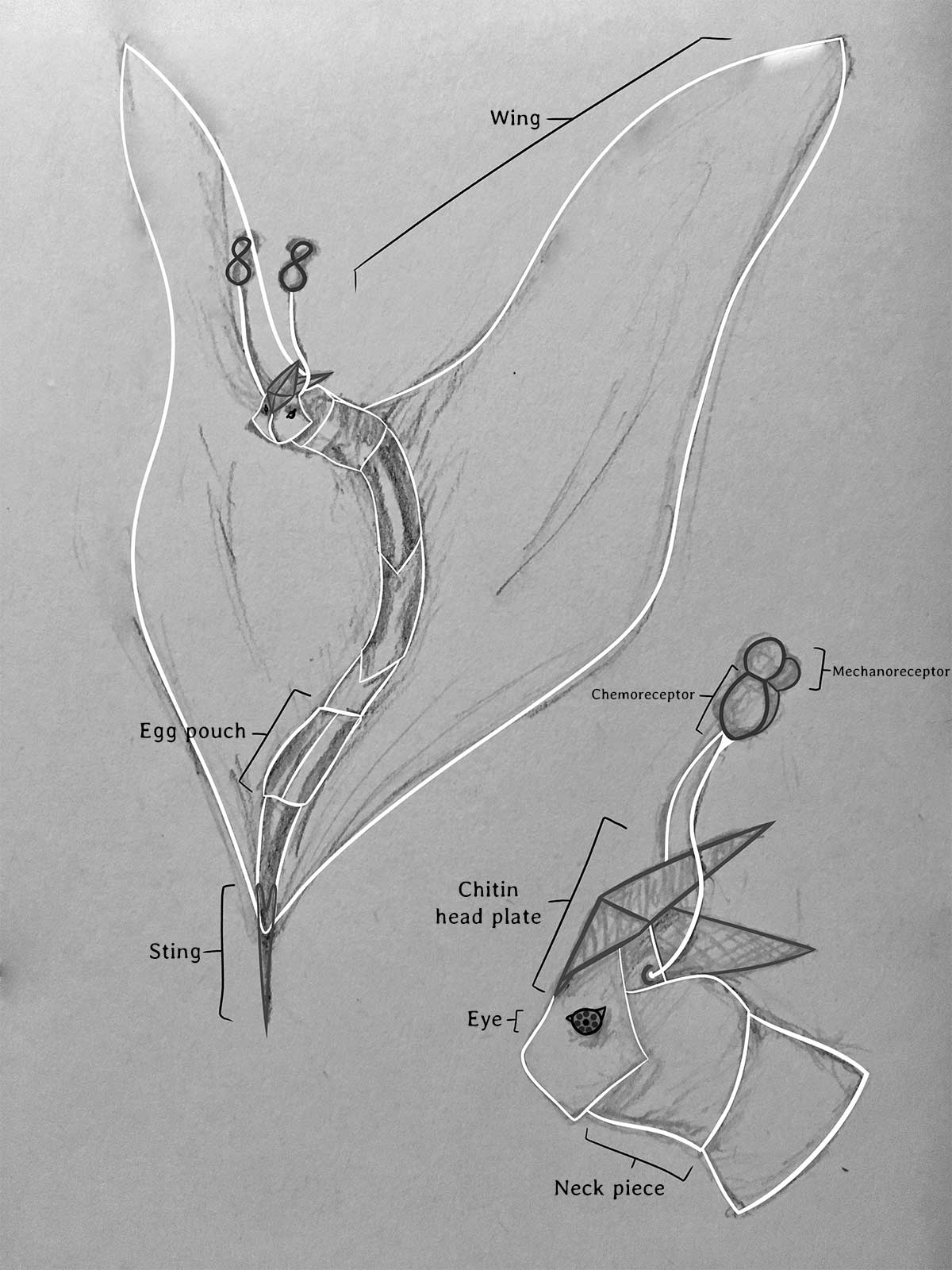Lefkos Chartaetos
Wonderful creatures, although dangerous if messed with. The safest way to avoid their venom is simply getting out of their way and observing from afar. They don't lose their grace due to distance, I can assure you of that. prof Theodric Stavros about the Lefkos Chartaetos
Basic Information
Anatomy
At first glance, the creature would appear as if it had no limbs at all. However, the "kite" structure on its back is, in fact, two wings very closely connected to each other, each counted as a limb giving a total of 2. Lefkos has no real skeleton, with only a single inner "rod" supporting all the muscles and internal organs. The previously mentioned wings are made of a flexible and resistant tissue, which lowers the possibility of them getting damaged from an impact during flight. They do have a structure that acts as their skull and it is located at the very top of the supporting rod. Out of their head stick out two long antennae and a chitin plate that serves as the external protection of the brain. The rod ends with a sting at the bottom, through which the venom can be administered to a potential predator or prey.
Genetics and Reproduction
The Lefkos does reproduce sexually. The female lays eggs, which it previously carries around in a pouch on its abdominal side for at least a month, in a specially prepared nest and then the male sprays them with its seamen. The eggs develop fully after at least five weeks and then from them, the offspring hatches.
Growth Rate & Stages
After hatching, the offspring Lefkos looks like an identical smaller copy of an adult, just without the head protection. It then continuously grows in size throughout the next year or so, also developing the chitin head shield.
Dietary Needs and Habits
Lefkos is an omnivore, mostly focusing on plant life and bigger insects as its main food source.
Additional Information
Uses, Products & Exploitation
The venom of Lefkos Chartaetos is used as a cure for the Ormykite Paralysis due to its effects of causing sensory hyperreactivity. If given a controlled dose, a suffering patient can have his mobility restored and the effects of the paralysis nullified to some degree.
Geographic Origin and Distribution
They live strictly within the areas of the great northern mountains of the Central Continent.
Perception and Sensory Capabilities
Eyesight
Lefkos does have two very small eyes but they provide very little sharp sight, they instead give the animal a broad idea of what is moving and what is not. Additionally, it allows it to see general plain colours around its environment.Smell and touch
The two antennae atop the head serve as both a chemoreceptor and mechanoreceptor. Their ability to pick up smells is quite good, considering their small size, and is mostly used by them to locate suitable plant life for food. The sense of touch in their case is rather poor, due to the fact they mostly remain up in the air and use other senses to find themselves in the environment.Hearing
Hearing is something the Lefkos have developed quite substantially, as they use sounds as guidance to avoid danger. They possess two long outgrowths that go on their back, which serve as their ears.
Scientific Name
Lefkos chartaetos
Lifespan
10 years
Average Height
They're about the size of a kite.
Average Weight
3-5kg
Body Tint, Colouring and Marking
They usually range between a pearl white colour and light gray, often having darker shades of gray around their body, as to imitate a snow covered rock.
Remove these ads. Join the Worldbuilders Guild










Comments